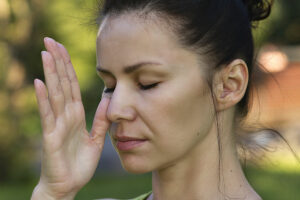11 Signs of Poor Eyesight Due to High Sugar

The human eyes are windows to the world, allowing one to witness its beauty and intricacies. But did you know that excessive sugar intake could take a toll on your eyesight? Research suggests that high sugar levels in the body can contribute to various eye health issues. Sugar has become a ubiquitous part of modern meal plans, with its sweet temptations lurking in countless foods and beverages.
While the harmful effects of sugar on overall health are well-known, its impact on eyesight is often overlooked. This ignorance makes it all the more important to look into the matter with the severity it deserves.
Blurred vision
Excessive sugar intake can lead to fluctuations in blood sugar levels, causing the lens in the eye to swell, resulting in blurred vision. It can occur intermittently, especially after eating sugary foods or drinking sweetened beverages. The vision may take some time to return to normal after the sugar levels stabilize. If you notice recurring blurred vision, it is essential to monitor your sugar intake and consult an eye care specialist for a comprehensive evaluation.
Increased sensitivity to light
High sugar levels can cause the eye’s lens to become more sensitive to light, leading to increased light sensitivity or photophobia. Individuals with poor eyesight due to excessive sugar intake may experience discomfort or pain when exposed to bright light. This sensitivity can be bothersome and affect daily activities, making it necessary to wear sunglasses or seek shade in well-lit environments. Managing sugar intake and protecting your eyes from excessive light exposure can help alleviate this symptom.
Eye fatigue
Prolonged exposure to high levels of sugar can contribute to eye fatigue or eye strain. Excessive sugar intake can lead to fluctuations in energy levels, resulting in tired, achy eyes. Eye fatigue may be exacerbated by activities that require prolonged focus, such as working on a computer, reading, or driving. Taking regular breaks, practicing the 20-20-20 rule (looking away from the screen every 20 minutes at an object 20 feet away for 20 seconds), and maintaining balanced meals can help reduce eye fatigue associated with sugar abundance.
Dry eyes
Excessive sugar intake can disrupt the normal functioning of tear glands, leading to dry eyes. The condition can cause discomfort, redness, and a gritty or sandy feeling in the eyes. It is important to note that dry eyes can have multiple causes, and excessive sugar intake can exacerbate this condition in some individuals. To alleviate dry eyes, consider using artificial tears or lubricating eye drops recommended by an eye care professional. Additionally, staying hydrated and avoiding excessive sugar intake can help maintain adequate tear production.
Difficulty adjusting to the darkness
Eyesight affected by excessive sugar intake may manifest as difficulty adjusting to darkness or experiencing night vision problems. High sugar levels can affect the retina, leading to changes in the cells responsible for vision in low-light conditions. If you struggle with seeing clearly in low-light environments or have challenges adapting to darkness, it may be worth discussing this symptom with an eye care specialist. They can evaluate your eyes and provide appropriate guidance and treatment options.
Increased risk of eye conditions
Intake of excessive sugar in meals and snacks left unchecked over a long period can make you more susceptible to developing various eye concerns. The list includes conditions like glaucoma, diabetic retinopathy, and cataract. These conditions have been linked with uncontrolled blood sugar levels and can be accompanied by other health concerns. Glaucoma, for example, is a group of eye health conditions that can damage the optic nerve because of the added pressure on the eyes. Diabetic retinopathy, on the other hand, is a complication concerning the eyes arising from diabetes. It affects the blood vessels connected to the retina and can potentially cause vision loss. Cataracts happen when the protein in the eye lens start clumping together. This results in patients experiencing clouding and impairment of their vision.
Reduced color perception
Poor eyesight linked to excessive sugar levels can affect color perception. Some individuals may notice a dulling or alteration in their ability to perceive vibrant colors. Colors may appear less vivid or washed out, indicating a potential impact on the function of the retinal cells responsible for color vision. If you experience changes in color perception, it is advisable to consult an eye care specialist for a comprehensive eye examination and appropriate management strategies.
Impaired depth perception
High sugar levels can affect your depth perception, making it difficult to judge distances accurately. This can manifest as misjudging the location of objects or having difficulty with activities that require depth perception, such as parking a car or pouring liquid into a glass. If you experience challenges with depth perception, it’s advisable to consult an eye care specialist to determine the underlying cause and explore appropriate treatment options.
Increased eye irritation
Higher than usual intake of sugary foods and beverages can contribute to redness and irritation of the eyes. It can lead to increased inflammation that can impact the blood vessels in the body, including those connected to the eyes, causing the eyes to feel more irritated. This can result in red, itchy, or watery eyes. If you frequently experience eye irritation in relation to your sugar treats, it’s important to monitor your food intake and consider making necessary adjustments to alleviate this symptom.
Slower healing of eye injuries
Elevated sugar levels can hinder the body’s natural healing processes, including the healing of eye injuries. If you notice that your eyes take longer to recover from minor injuries or irritations, it may be attributed to poor eyesight associated with excessive sugar dependence. It’s essential to provide proper care for eye injuries and consult an eye care professional if you experience delayed healing or persistent issues.
Increased sensitivity to eye strain
Among the various other problems with excessive sugar intake is the possibility of increased strain on the eyes. It makes the organ prone to discomfort and more sensitive than it normally would be when engaged in daily activities. People with high sugar intake might feel excessive discomfort when using electronics or working on something that needs close work for extended periods of time. To minimize eye strain, practicing good visual habits, such as taking regular breaks, maintaining proper lighting conditions, and ensuring proper ergonomics, is important.



